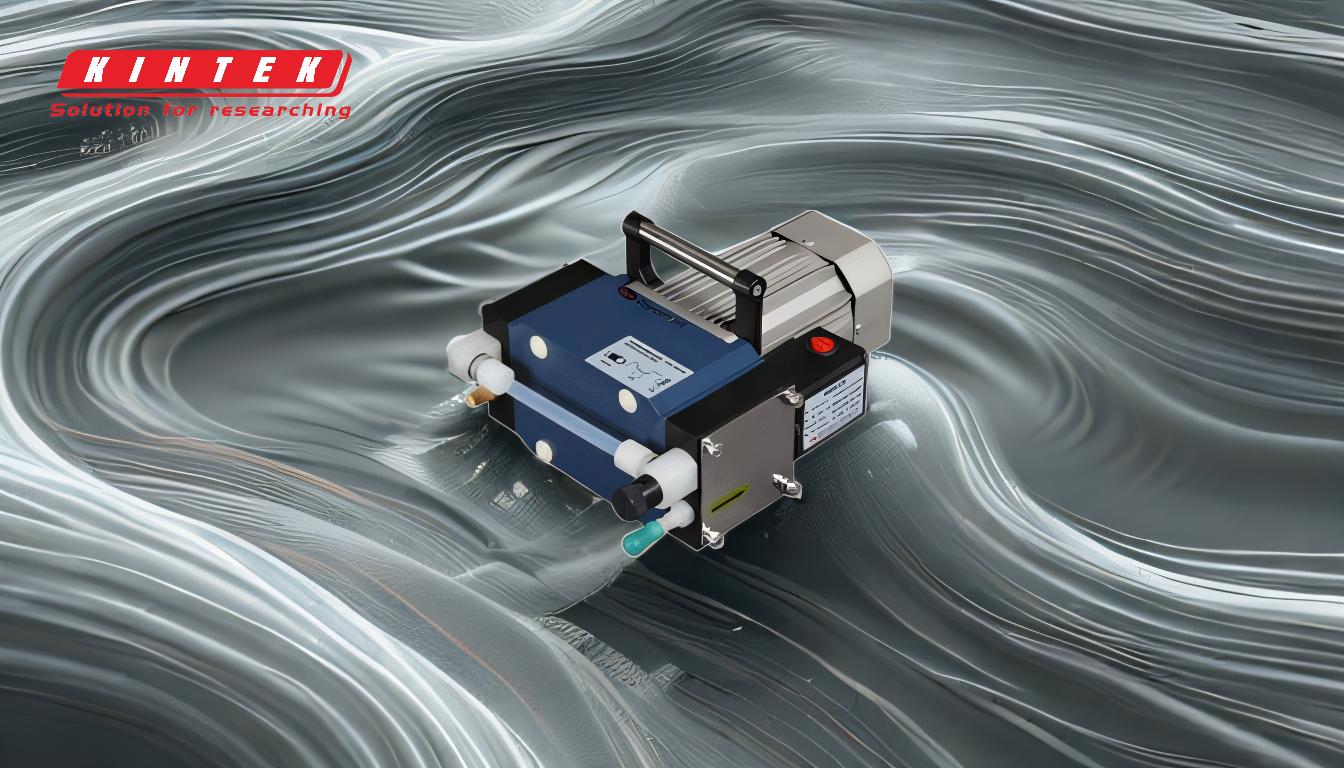Yes, a vacuum pump can be calibrated to ensure it operates accurately and efficiently. Calibration involves verifying and adjusting the pump's performance to meet specific standards or requirements. This process is essential for maintaining the pump's reliability, accuracy, and longevity, especially in applications where precise vacuum levels are critical. Below, I will explain the key aspects of vacuum pump calibration, its importance, and how it can be performed.
Key Points Explained:

-
What is Vacuum Pump Calibration?
- Calibration is the process of comparing the vacuum pump's performance against a known standard or reference to ensure it operates within specified tolerances.
- It involves measuring the pump's ability to achieve and maintain the desired vacuum level and adjusting it if necessary.
- Calibration ensures that the pump's readings (e.g., pressure levels) are accurate and reliable.
-
Why is Calibration Important?
- Accuracy: Ensures the pump provides precise pressure readings, which is critical in applications like semiconductor manufacturing, research labs, or medical equipment.
- Efficiency: A well-calibrated pump operates more efficiently, reducing energy consumption and wear and tear.
- Preventative Maintenance: Regular calibration helps identify potential issues early, such as leaks or component degradation, preventing costly breakdowns.
- Compliance: Many industries require calibrated equipment to meet regulatory and safety standards.
-
How to Calibrate a Vacuum Pump:
-
Step 1: Gather Equipment
- A reference vacuum gauge (traceable to a national standard) for accurate comparison.
- A vacuum chamber or test setup to simulate operating conditions.
- Tools for adjustments, such as calibration screws or software interfaces.
-
Step 2: Connect the Reference Gauge
- Attach the reference gauge to the same system as the pump's built-in gauge to compare readings.
-
Step 3: Run the Pump
- Turn on the pump and allow it to reach its operating temperature and stable vacuum level.
-
Step 4: Compare Readings
- Compare the readings from the reference gauge and the pump's gauge. If there is a discrepancy, note the difference.
-
Step 5: Adjust the Pump
- Use the pump's calibration settings (if available) to adjust its output to match the reference gauge. This may involve mechanical adjustments or software recalibration.
-
Step 6: Verify Calibration
- Repeat the process to ensure the pump consistently matches the reference gauge.
-
Step 1: Gather Equipment
-
Factors Affecting Calibration:
- Contaminants: Contaminants in the system can affect the pump's performance and calibration accuracy. Regular maintenance, such as cleaning and replacing filters, is essential.
- Environmental Conditions: Temperature, humidity, and altitude can influence vacuum levels and should be accounted for during calibration.
- Wear and Tear: Over time, components like seals, valves, and gauges may degrade, requiring recalibration or replacement.
-
Maintenance and Ongoing Calibration:
- Regular calibration should be part of a comprehensive maintenance plan to ensure the pump's long-term reliability.
- Schedule calibration based on the pump's usage, manufacturer recommendations, and industry standards.
- Keep detailed records of calibration dates, results, and adjustments for compliance and troubleshooting purposes.
-
When to Calibrate a Vacuum Pump:
- After installation or setup to ensure it meets operational requirements.
- Periodically, based on the manufacturer's guidelines or industry standards.
- After significant repairs or component replacements.
- If there are noticeable performance issues, such as inconsistent vacuum levels or unusual noises.
By following these steps and understanding the importance of calibration, you can ensure your vacuum pump operates at peak performance, providing accurate and reliable results for your specific application. Regular calibration and maintenance not only extend the pump's lifespan but also contribute to the safety and efficiency of your operations.
Summary Table:
| Key Aspect | Details |
|---|---|
| What is Calibration? | Comparing pump performance against a known standard for accuracy. |
| Why Calibrate? | Ensures accuracy, efficiency, preventative maintenance, and compliance. |
| How to Calibrate | Use a reference gauge, compare readings, adjust, and verify calibration. |
| Factors Affecting Calibration | Contaminants, environmental conditions, and wear and tear. |
| When to Calibrate | After installation, periodically, after repairs, or during performance issues. |
Ensure your vacuum pump operates at peak performance—contact our experts today for calibration guidance!









